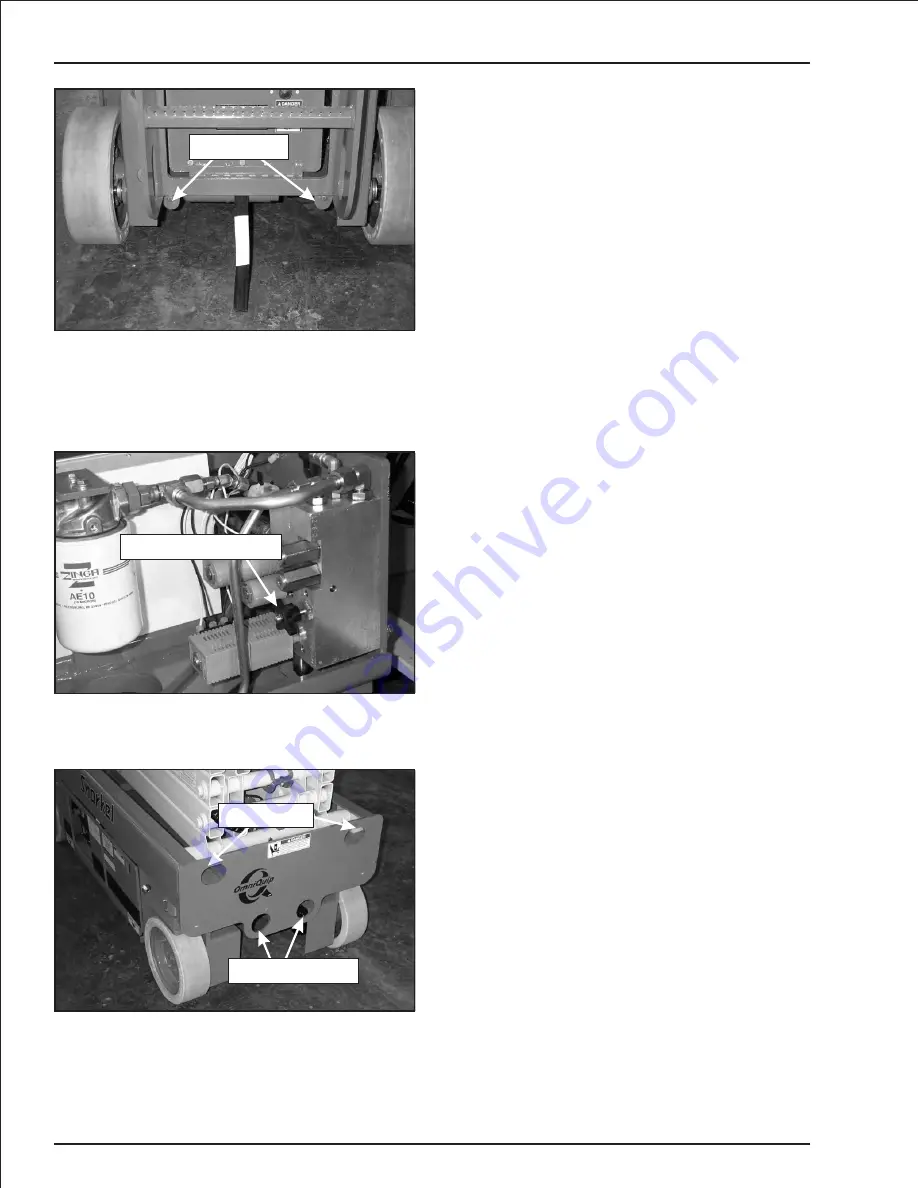
Figure 10.2—Brake Release Cams
6. Unlatch and swing out the hydraulic tray on the right
side of the chassis. The free-wheeling valve is lo-
cated on the hydraulic manifold (refer to Figure
10.3). Turn the free-wheeling valve counterclock-
wise to a fully opened position.
Figure 10.3—Free-Wheeling Valve
7. Attach the winch to the tie-down lugs (refer to Fig-
ure 10.4) on the front of the chassis.
Figure 10.4—Tie-Down and Lifting Lugs
8. Use the winch to position the aerial platform on the
transport vehicle.
9. Close the free-wheeling valve.
10. Use a wrench to manually reset the parking brakes.
Driving
The aerial platform can tip over if it becomes unsta-
ble. Death or serious injury can result from a
tip-over accident. Do not drive on ramps that ex-
ceed 20 percent grade, or where conditions of the
ramp could cause driving to be hazardous.
Use a winch to load and unload the aerial platform on
ramps that exceed 20 percent grade. A 20 percent
grade is a 24
″
(61 cm) vertical rise in 10
′
(3.05 cm) hori-
zontal length. A winch may also be used when poor trac-
tion, uneven surfaces, or stepped ramp transitions
make driving hazardous.
Drive the aerial platform onto the transport vehicle if a
winch is not available and the ramp incline is within the
20 percent grade capability of the aerial platform
Use the following procedure to drive the aerial platform
onto the transport vehicle.
1. Position the transport vehicle so the aerial platform
will not roll forward after it is loaded.
2. Chock the vehicle wheels so it cannot roll away
from the ramp while the aerial platform is loaded.
3. Remove any unnecessary tools, materials, or other
loose objects from the platform.
4. Retract the platform extension and fully lower the
platform.
5. Drive the aerial platform to the foot of the loading
ramp with the front wheels nearest the ramp. Make
sure the aerial platform is centered with the ramps
and that the steering wheels are straight.
6. Place the joystick in high for climbing a ramp or low
for descending a ramp.
7. Drive the aerial platform on or off the transport vehi-
cle in a straight line through the grade transitions
with minimal turning.
Hoisting
Use a four point sling arrangement attached to the lifting
lugs when hoisting the aerial platform. Machine dam-
age can occur if the sling is attached to the chassis,
scissors structure, or platform.
The potential for an accident increases when the
aerial platform is lifted using improper equipment
and/or lifting techniques. Death or serious injury
can result from such accidents. Use proper equip-
ment and lifting techniques when lifting the aerial
platform.
10 - 2
S1930 – 0361266
Chapter 10. Stowing and Transporting
Lifting Lugs
Tie-Down Lugs
Free-Wheeling Valve
A
DANGER
A
DANGER
Brake Cams


































